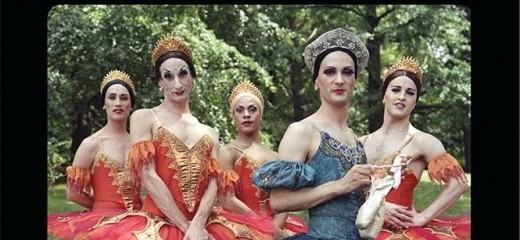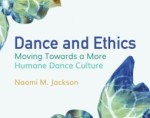
Drag Dance: Relived, Reincarnated, Reimagined
by Leila Mire
The explosion of shows like RuPaul’s Drag Race offers greater visibility to the concept of “drag” to mainstream media audiences. Universities have begun including queer theory in theatre classes while popular American concert dance remains largely antiquated, trailing behind the rest of the arts with an air of faithful allegiance to a troubled past. Selby Wynn Schwartz tackles this long overdue liminality in her new book, Bodies of Others: Drag Dances and Their Afterlives which serves as the “first book-length exploration of drag dance in the U.S.” and considers “politics of gender in motion” through a close reading of specific drag works.
Schwartz, a professor of performance studies and embodiment at Stanford University, pursues a thorough analysis of prototypical American drag works spanning the last four decades. By no means does this book give a comprehensive look into the history of American drag dance, nor does it intend to, rather it serves as a catalyst for redefining how bodies and drag are viewed on stage.
The introduction sets the scene by considering the vast repertory of gender, the theatricality of bodies in space, and the ways in which gesture “determines who gets to demand and dominate, and who has to cross their legs and put up with it” (p. 4). Schwartz acknowledges how “queerness” and “drag” are wrongfully used as umbrella terms. She illustrates the power of movement knowledge and embodiment in performance.
Schwartz opens her book with an examination of Mark Morris’s Dido and Aeneas—a choice that raises questions. Perhaps this selection is due to Morris’s recognition in the larger community, chronological order of works analyzed, or the subject matter’s close ties with the AIDS epidemic, but it feels unsettling that an argument on American drag dance, a genre indebted to people of color (particularly the African American community), is initially discussed through the lens of a white choreographer creating work abroad. Schwartz acknowledges Morris's positionality without considering her own complicity in highlighting his work when a myriad of POC artists could have been explored instead.
Schwartz’s focus then shifts to Richard Move’s Martha @ Mother and Kazuo Ohno’s La Argentina Sho. Chapters two and three discuss drag’s ability to incorporate how difference is hosted in other bodies. The text reimagines drag dances outside strict binaries and recognizes how Occidental and Oriental views differ, drawing on examples like vogue and lip sync. This captures the notion of singular and collective bodies on stage and distinguishes between copying, or mimicking another performer versus the temporal, fleeting nature of admiration.
The final chapters explore the iconic, subversive work of Les Ballets Trockadero and Monique Jenkinson’s Faux Real. The drag works challenge and threaten conceptions of realness, hierarchical dance structures, balletically ritualized paragons, and racialized ideals. Throughout each chapter, Schwartz strengthens her argument on the nuanced subversion of drag.
Perhaps most compelling is conceptualizing the body as a place to harbor memories that are inhabited by other performers. Dancing bodies serve as archives to contest separations between the living and the dead so performing becomes an act of keeping memory alive. The examples encourage reconsideration of what antiracist performance looks like through relived bodies.
Schwartz’s thorough argument propels readers to reconsider corporeality and envision drag as a space that is connected to hope, loss, and mourning. Staged identities, queer kinship, subversion of bodily codes, and the right to inhabit space are only the most basic groundwork of the radical performance at play.
The author’s arguments are wrapped and tightly knotted with connections to numerous layers of dance history. However, the selected examples point to a larger issue. While Schwartz valiantly attempts to ensure diversity within her research, it inevitably reflects the historical dominance of white bodies on American stages. Perhaps the society we live in and systemic worlds of concert dance and academia are at fault. Schwartz acknowledges this throughout the book and has clearly performed meticulous research on the subject in hopes of rectifying the slippage of queer history in concert dance. Nevertheless, the reader leaves wanting a clearer breakdown of the true lineage of drag performance that was birthed by POC.
This book takes a major step in paving the way for an expansion of dance research on drag. Schwartz's approach toward embodiment and realness reflects the power of movement knowledge and the vitality of dance. It serves as the first of its kind and advocates for treating drag as a serious, academic study. Furthermore, it reminds dancemakers, performers, and audiences that American dance views toward gender and codes are heavily dated. Art is intended to subvert, and it is about time dance and academia assumes its role on stage, difference, drag, and all.
Selby Wynn Schwartz, Bodies of Others: Drag Dances and Their Afterlives. Ann Arbor, MI: University of Michigan Press, 2019.
*thINKingDANCE last wrote about drag performance in Whitney Weinstein’s BASIC WITCHES: An Esteemed Elixir of Musical Theater and Drag.
By Leila Mire
September 7, 2020








